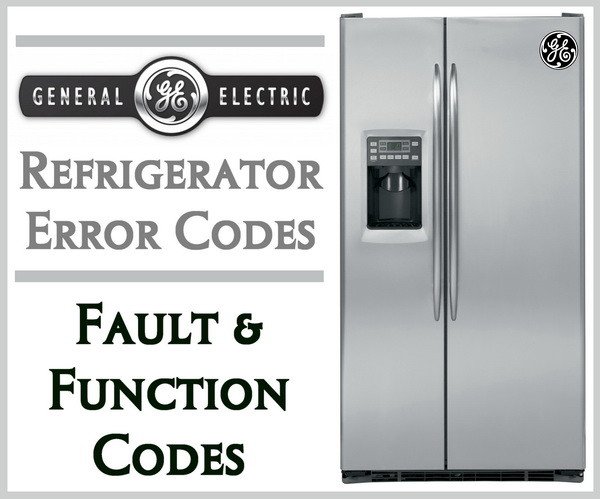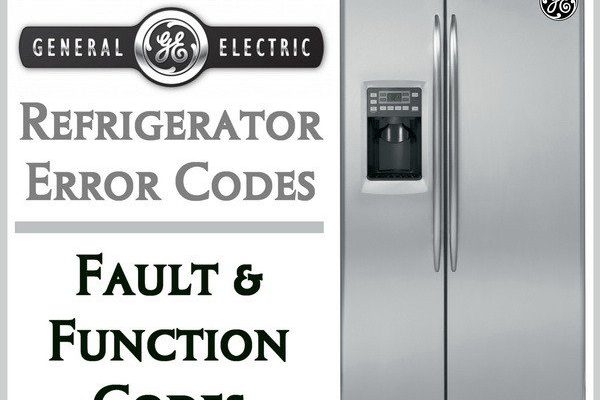
Imagine a detective working on a case with all the clues laid out on the table. The E1 error code is one such clue in the world of appliance diagnostics. In simple terms, this code usually signifies an issue with the refrigerator’s temperature sensor. Think of the sensor as a thermostat keeping everything in check — when it fails, the fridge might not know if it’s too warm or too cold. Now, the big question looms: if something goes wrong with this sensor, will GE step in to fix it under warranty? Keep reading, and we’ll explore the details together.
Understanding the GE Refrigerator E1 Error Code
The E1 error code is like a small red flag that pops up on your refrigerator’s control panel. It indicates a problem with the temperature sensor, which is crucial for maintaining the right conditions inside your appliance. If the sensor isn’t working properly, your fridge might struggle to keep your milk cold or your veggies crisp. It’s like trying to bake a cake without a working oven thermometer — you’re really just guessing.
You might be wondering why this error even occurs. Well, like any piece of technology, sensors can fail due to wear and tear over time. It could also be due to a manufacturing defect or perhaps an unexpected power surge. Of course, external factors like moisture or accidental damage could play a part, too. Understanding what triggers the E1 code is the first step in figuring out whether it’s something that falls under the warranty’s protective umbrella.
When you first spot this error, it’s a good idea to consult your owner’s manual. GE provides this documentation to help you troubleshoot problems. Often, the manual will have a dedicated section for error codes, providing insights into what might be wrong and potential first steps for addressing the issue. Taking this step helps you arm yourself with the right information before reaching out to GE customer support.
Warranty Basics: What’s Covered and What’s Not?
Warranty coverage can sometimes feel like deciphering a secret language, but it doesn’t have to be that way. Essentially, a warranty is a promise from the manufacturer that your appliance will work as intended for a certain period. If parts of the fridge, like the temperature sensor, fail due to a factory defect within this timeframe, GE would typically cover the repairs or replacements.
However, there’s a catch: not everything is covered. For instance, if the sensor fails because it’s been damaged by external factors — say, someone accidentally knocked it with a heavy pot — that’s usually not on them. It’s akin to car insurance not covering a scratch you made yourself. It’s essential to understand these nuances to determine if your specific situation qualifies for warranty service.
Most GE refrigerators come with a standard one-year warranty for parts and labor. This means if your E1 error code is a result of a defective temperature sensor, and your fridge is still under this warranty, then the fix is likely covered. But, if you’ve had the fridge longer than a year, or if the damage was accidental, you might need to explore other options for repair.
The Claim Process: Navigating GE’s Warranty Services
So, you’ve assessed that your E1 error seems to be due to a defect, and your appliance is still under warranty. What’s next? The process is fairly straightforward, but it does require a bit of preparation. Start by gathering all necessary information: your refrigerator’s model number, proof of purchase, and a detailed description of the problem.
Next, reach out to GE’s customer service. They’ll guide you through the steps, possibly arranging for a technician to visit your home and assess the issue. It’s like having an expert detective step in to solve the case. The technician will confirm whether the error is due to a covered defect or if something else is at play.
It’s always a good idea to keep all documentation of these interactions. Keep notes of whom you spoke with, what was discussed, and any emails or letters received. This can be invaluable if there are any questions or concerns during the process. And remember, stay patient; sometimes these processes take a bit of time, but it ensures that you get the service you need.
Preventative Measures: Keeping Error Codes at Bay
While it’s great to know that your GE refrigerator might be covered under warranty for the E1 error, preventing the issue altogether is even better. Think of your fridge like a health-conscious friend — it needs a bit of care and attention to keep functioning at its best. Regularly cleaning the coils and ensuring proper ventilation can go a long way in maintaining your appliance’s performance.
Make it a habit to check and maintain the correct temperature settings in your fridge. Too high or too low temperatures can strain the sensors, leading to potential failures. It’s like maintaining a steady pace on a long run; push too hard, and you risk injury.
Lastly, consider the environment where your fridge resides. Moisture and dust are common culprits in electronics malfunctions. Keeping your kitchen well-ventilated and your appliance away from excessive heat or dampness can prevent unnecessary wear and tear.
By following these preventative measures, you’re not only prolonging the life of your fridge but also minimizing the risk of encountering those pesky error codes. With a little attention, you can ensure your appliance remains a faithful kitchen companion for years to come.
